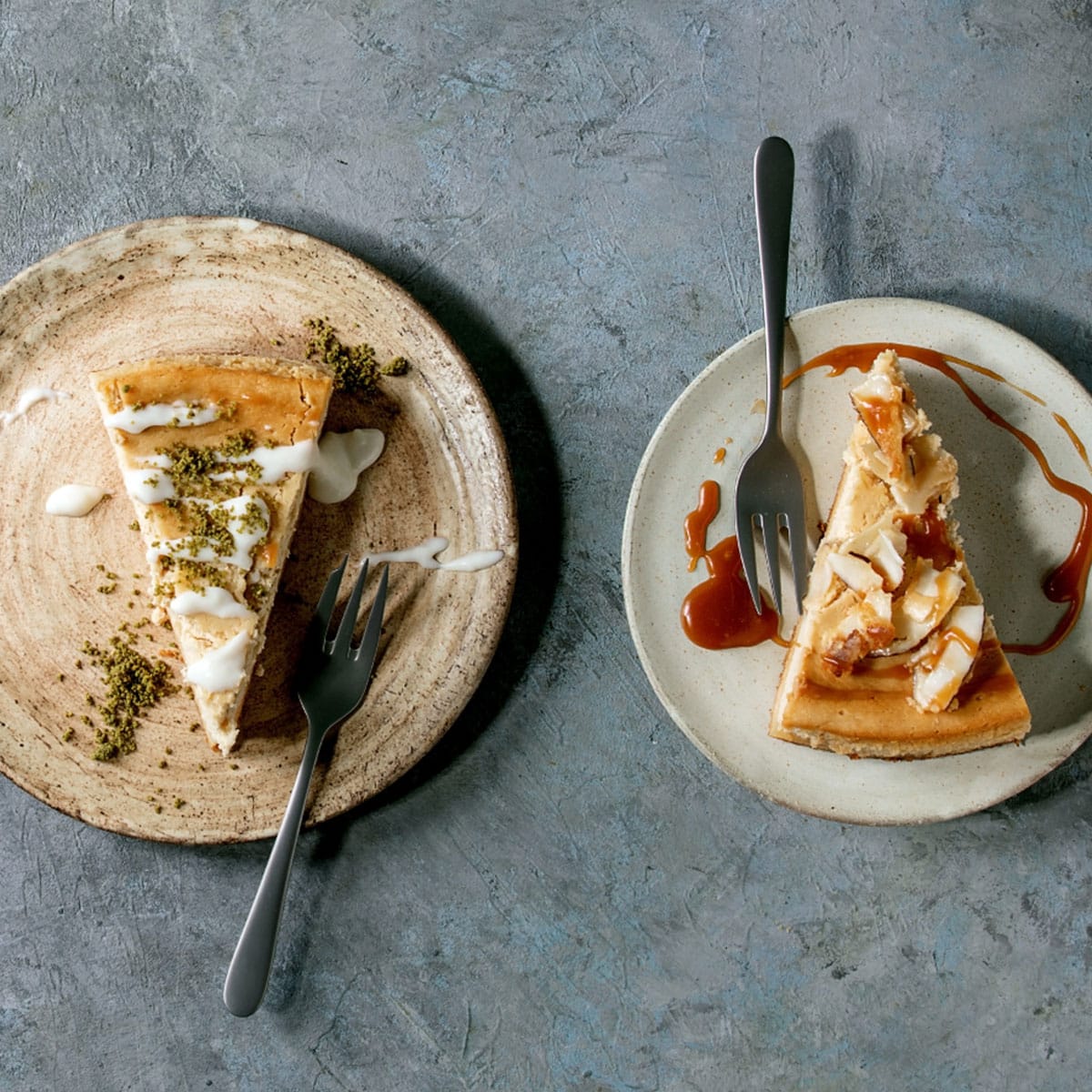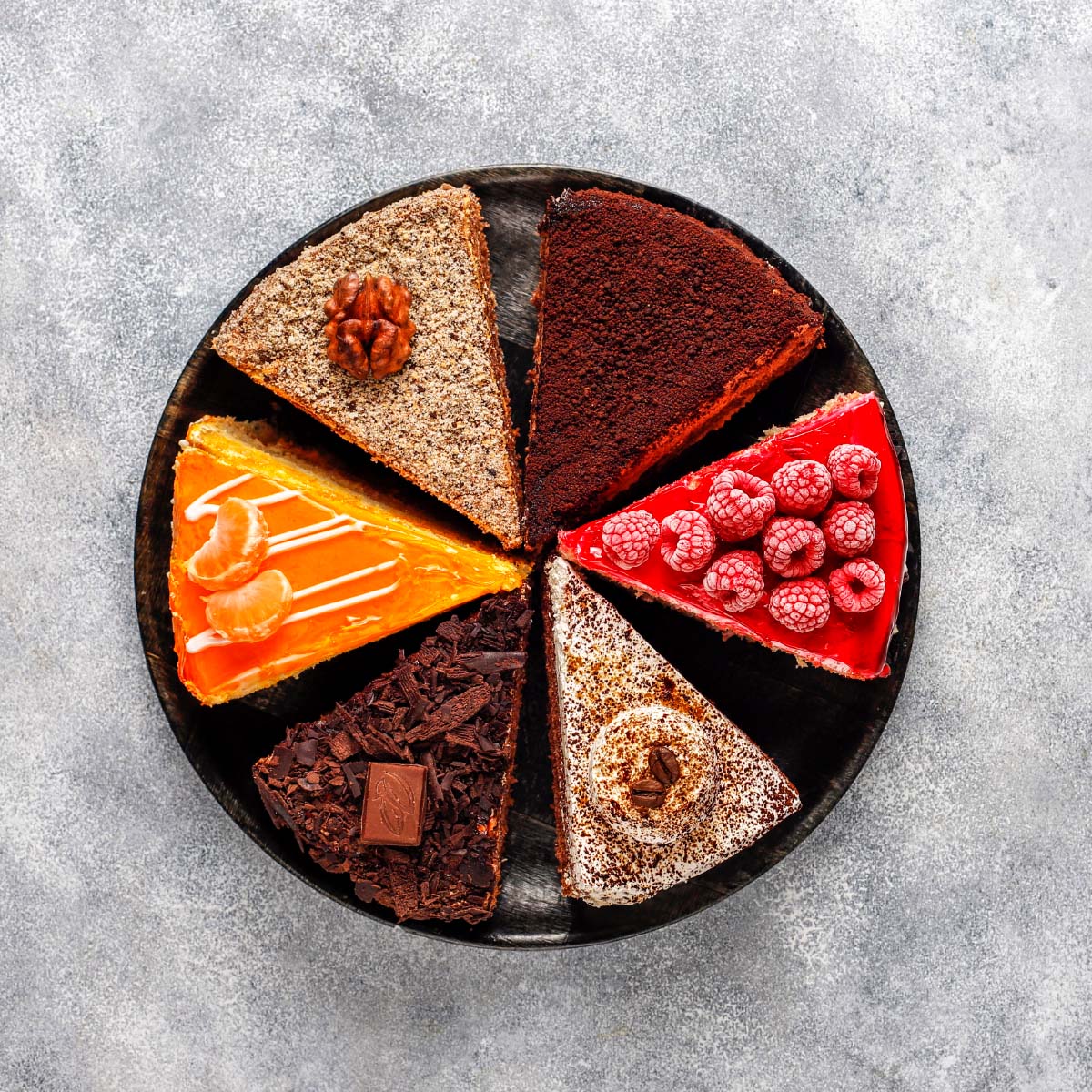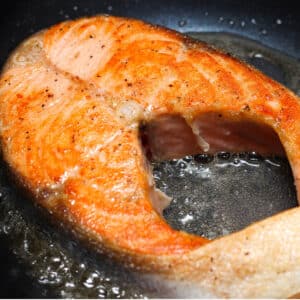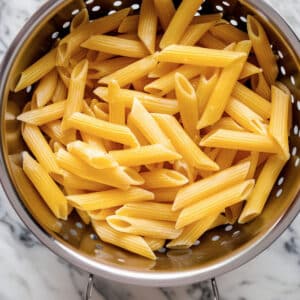In theory, cheesecake is a perfect dessert. It's rich, creamy, and infinitely customizable. However, baking takes hours, preventing many home cooks from enjoying this delicate treat. Nevertheless, there is a way to cool your cheesecake quickly without sacrificing its flavor or texture. Follow these simple steps, and you'll enjoy this delicious dessert in no time!
When cheesecake comes out of the oven, it is hot and needs to cool down before you can eat it. Before proceeding with anything else, you must first understand the purpose of cooling the cheesecake.
Jump to:

The importance of cooling cheesecake before chilling it
1 The cake sets properly when cool, giving it a nice, firm texture.
The cheesecake needs to cool so that the filling can be set. The structure of the cheesecake will change as it cools. The proteins in the eggs will firm up, and the water in the cheesecake will evaporate, causing the cheesecake to become denser.
On the other hand, a warm cheesecake will be soft and gooey. It will not have the same firm texture as a cooled cheesecake. For instance, the filling would likely ooze out if you were to slice it into a warm cheesecake.
2 It prevents the cheesecake from cracking.
As the cheesecake cools, it will shrink. If you were to take a cheesecake out of the oven and immediately start slicing it, the sudden temperature change would cause the cake to crack. Cracks ruin the appearance of the cheesecake and can also be challenging to repair.
The cooling process is also crucial for preventing the cheesecake from cracking as it shrinks. If you let the cheesecake cool slowly, it will have time to adjust to the change in temperature and will be less likely to crack.
3 The flavor develops as it cools.
After a cheesecake comes out of the oven, its flavor has not fully developed. The cheesecake needs time to cool so all the flavors can come together. All you can taste is the sweetness from the sugar. The flavors from the other ingredients are not as pronounced.
If you were to eat a cheesecake while it was still warm, you would miss out on all the complex flavors that come together to make a truly delicious cheesecake.
4 Better slicing
A cooled cheesecake will be firm and cut cleanly, giving you nice, neat slices. If you try to slice a cheesecake while it is still warm, you will end up with a mess. The filling will be too soft and will likely squish out of the cake as you try to slice it.
Bottom line:
It is essential to let your cheesecake cool down before slicing or serving it. If you try to rush the process, you will end up with a cake that is difficult to slice, has an altered flavor, and may even crack.
So, how do you cool a cheesecake quickly?
Patience is key when cooling a cheesecake. You cannot rush the process without risking the quality of the cake because cheesecakes are delicate. An adequately set cake depends on the cooling process. If you try to cut into a cheesecake that hasn't cooled properly, you'll end up with a gooey, runny mess. So set that timer and let the cheesecake cool completely before proceeding.
Bottom line:
I can't stress this enough. It is SO important to let your cheesecake cool gradually so that the flavors can meld and the texture firm up properly.
Keep in mind:
- Cheesecakes are not very tolerant of sudden temperature changes. Sudden cooling can cause the cake to crack. When a cheesecake is cooling, the egg and cream cheese proteins are still setting. A cake cooled too quickly will have those proteins set too quickly, causing it to crack. In that sense, cooling should always be a gradual process rather than a quick one.
- It is also advisable not to open the oven door for the first 30 minutes of baking. In this case, the cheesecake may crack. Cheesecakes continue to bake as they cool; therefore, cracks will occur if you overbake.
Read:
How long should you cool a cheesecake before putting it in the fridge?
The drastic temperature change can cause cheesecakes to crack, such as going from oven to fridge. This can cause the cheesecake to deflate a bit too.
It's best to let your cheesecake cool gradually by first turning off the oven and leaving the cake in there for 30 minutes with the door cracked open. Cooling will occur at a nice, slow pace as the cheesecake slowly reaches room temperature.
Then, transfer the cheesecake to the counter and let it cool for another hour before placing it in the fridge and letting it chill for at least 4 hours or overnight. This will give the cheesecake time to set and firm up. This process can take a few hours, so be patient!
Allow the cooling process to take its course.
Cooling your cheesecake too quickly is a common mistake that can result in cracking, sinking, or an overall unappetizing appearance.
Step 1 Turn off the heat
You can turn off the heat of your conventional oven, leave the door crack open, and allow it to cool inside for 30 minutes or an hour, then transfer it to a cooling rack to finish cooling. In contrast, a gas oven might overcook it, so you should move it immediately to a cooling rack.
Next, take a large, flat surface and place it over the top of the cheesecake. A cutting board or a large plate will work perfectly. Then, use a clean towel to pat the cheesecake's surface gently. This will help to prevent condensation from forming on the surface of the cake.
Step 2 Place the cheesecake in the fridge.
Once the cake pan is no longer hot to the touch, put aluminum foil to cover and put it in the fridge to chill for 3-4 hours or overnight. This will help it to cool down even faster, as the cold air will speed up the cooling process. Chilling is key to getting a smooth, creamy texture.
Though this is the slowest way to cool the cheesecake, it is also the most reliable. It will take about 3-4 hours for the cheesecake to cool completely in the refrigerator. The cold temperature will help solidify the cheesecake so you can eat it without issue.
Tip: It is best to wait until the cake has chilled overnight and run a knife along the edge of the crust and sides, unbuckling the pan gently as you go.
Step 3 Stick the cheesecake in the freezer.
Using the freezer for short bursts to cool the food without freezing is called flash freezing. This will give you some extra time if you're in a bind.
Then, after it has cooled on the wire rack, put it on a flat surface, such as a baking sheet, and place it in the freezer for about 15 to 20 minutes. Check on it frequently to ensure it doesn't freeze through. Because the freezer is so cold, it is best to wrap the cheesecake in plastic or aluminum foil to prevent it from drying.
A quick tip: Putting your cheesecake straight from the oven into the freezer might seem like a shortcut. Consequently, this will ruin the cake's texture and prevent it from setting properly.
Step 4 Unwrap and enjoy
If you've followed all the steps up to this point, your cheesecake should be cooled and ready to enjoy. If it's still too warm for your liking, you can always pop it back in the fridge for a bit longer.
Here's another way to cool the cheesecake quickly.
Aside from putting the cheesecake in the fridge or freezer, below are the following ways to cool a cheesecake quickly. Choose the method that best suits your needs and time constraints. These are just some ways how to cool a cheesecake quickly.
1 Cool cheesecake in an ice bath
This method is best used when you are in a hurry, as it can cool down the cheesecake within minutes. To stop the cooking process as quickly as possible, you can place the cheesecake in an ice bath to cool it down.
- First, wrap the outside of your springform pan tightly with a few layers of plastic wrap. You won't have to worry about water getting into your cheesecake.
- Next, fill a large bowl with ice and water and place your pan in the bowl. Let the cheesecake sit in the ice bath for about 15 minutes or until it cools.
- Once your cheesecake is cool, remove it from the ice bath and place it in the refrigerator. Let it chill for at least 4 hours or overnight. And that's it! Your cheesecake is now ready to be served.
2 Let the cheesecake sit at room temperature.
If you are not in a hurry, let the cheesecake sit at room temperature until it is completely cooled. It usually takes two to three hours to complete this process.
Room temperature is ideal, but if it's a hot day, you may need to put it in the fridge for a bit. This is the slowest way to cool a cheesecake, but it is still possible. If you are in a hurry, you can put the cheesecake in the refrigerator for 30 minutes to help speed up the process.
It will take about 6 hours for the cheesecake to completely cool at room temperature. Once the cheesecake is cooled, you can store it in the refrigerator to firm up for a few hours or overnight.
3 Put the cheesecake in front of a portable fan.
Yes, this will require babysitting, but getting a cooling cheesecake ASAP is worth it. As a result, the cool air will pull the heat away from the cheesecake.
Place the cheesecake on a wire rack and set it in front of a fan. Let the fan blow on the cheesecake for about 15-20 minutes or until it is cooled completely.
Check the cheesecake's temperature every few minutes; once it's down to about 70° to 75°F, it's ready to be put in the fridge. For example, if you're using a box fan, have it on the lowest setting. Set the fan up, so it's blowing directly onto the cheesecake, and rotate it periodically so that the entire cake gets evenly cooled.
How do you know when the cheesecake is done baking?
Because cheesecake is so rich and creamy, testing it in the center with a toothpick to see if it is done as you would with the cake doesn't work. Cheesecake should jiggle a bit in the middle when gently shaken and have a bit of shine. As you shake, look at the edges; there should be about a 2 ½-inch ring set and drier-looking in the center. video here.
The heat from the cheesecake will help firm up the jiggly center as it cools. Remember, patience and the jiggle in the center are the real keys to a creamy cheesecake. Allow it to cool completely before slicing and serving for the best texture.
A gentle shake on your cheesecake will indicate if it's ready.
The steps are as follows:
Step 1
Take both hands to grip the cheesecake's pan before removing it using oven mitts.
Step 2
Once the cake is in the pan, gently shake it while keeping a close eye on its edges and center. You should be able to feel a slight jiggle in the center of the cheesecake, while the edges should be firm.
There's nothing wrong with the jiggly center of the cheesecake since it will firm up when cold, ideally overnight in the refrigerator and chill until firm, about 6 hours after cooling on a wire rack.
Step 3
If the edges are not set, and the center jiggles too much, you may need to bake it for another 10 to 15 minutes. Accordingly, make adjustments as necessary. If it doesn't jiggle, remove it from the oven immediately and let it cool down before it cracks.
Note: The shake and jiggle method is not an exact science but is the method of choice for experienced cheesecake bakers. It might be worth a try the next time you think of baking one as a treat for yourself.
Can you eat cheesecake fresh from the oven?
Of course, you can, but it's not going to be as good as it could be. Cheesecake needs time to cool, set, and firm up. It is one of those desserts that benefits from being cooled slowly.
When you let it cool slowly, the flavors have a chance to blend together, and the texture becomes more velvety smooth. This process can take several hours, so if you're in a hurry, there are a few things I mentioned above you can do to speed it along.
Why does cheesecake need to be refrigerated overnight?

You may wonder why the cheesecake needs to be refrigerated overnight. The answer is simple. Cooling overnight allows the flavors to meld together, and the texture of the cheesecake will be perfect! Also, the cheesecake needs time to set. When you initially bake the cheesecake, the center will still be jiggly. But as it sits in the fridge overnight, the center will become firm and set.
One of the main ingredients is cream cheese, so it is always best to refrigerate cheesecakes. Besides, who doesn't love a cold, creamy slice of cheesecake?
Remember, keep the cheesecake covered tightly in the refrigerator. This will prevent it from drying out or absorbing any strong odors from other foods.
Why do cheesecakes take so long to set?
Cheesecakes take so long to set firm because you must chill them for several hours before setting firm.
Cheesecakes are dense and heavy desserts made with cream cheese, eggs, and sugar. When these ingredients are combined and baked, the cheesecake needs time to firm up and set. Chilling the cheesecake helps the eggs appropriately set, giving them a firm texture.
If you were to try and eat a cheesecake immediately after it came out of the oven, it would be a gooey, runny mess.
So, to enjoy a delicious and firm cheesecake, you need to be patient and allow it to chill in the fridge for several hours. It helps the flavors meld together and the cheesecake firm up.
Make sure you don't leave it outside.
Cheesecake should not be left out after it has cooled for more than 2 hours. It can become contaminated with bacteria that will cause it to spoil. It will stay fresh for up to 5 days if stored properly in the fridge (completely covered). For example, if it is a hot day and your cheesecake is sitting out on the counter, put it in the refrigerator as soon as it has cooled.
How to freeze the cheesecake for extended storage
Step 1
As a first step to freezing the cooled cheesecake, take it out of the packaging and place it on a cutting board. Using a sharp knife, score the top of the cake in a criss-cross pattern.
Step 2
After cutting the cheesecake, place the slices on a plate and flash freeze for an hour unwrapped. Do you know why? When you wrap a food item and then freeze it, the moisture from the food gets trapped and condenses on the wrapping.
Step 3
Then, once the cheesecake is frozen, you can individually wrap each slice in cling film/plastic wrap, ensuring no gaps or holes in the cling film, as this will cause a freezer burn.
Step 4
Then, wrap the cake in a layer of aluminum foil. Again, make sure that there are no gaps or holes in the foil. You can also place the whole cheesecake in an airtight container before freezing.
Step 4
Make sure you label the cake with the date it was frozen and put it in the freezer. It will stay for four to six weeks at its peak quality.
Step 5
To thaw, remove the cling film/plastic wrap and place the frozen cheesecake slice on a plate. Leave it in the fridge overnight to thaw slowly.




